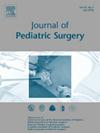The Transition of Patients with an ACE: Referral Pathway and Outcomes
IF 2.4
2区 医学
Q1 PEDIATRICS
引用次数: 0
Abstract
Aims
Transition of paediatric patients is challenging. This study aimed to assess the transition pathway for patients who underwent an ACE procedure as a child and to understand ongoing support requirements.
Methods
A retrospective review was conducted of all patients on the Pelvic Floor Clinical Specialist Nurse’s (PFCNS) database from a tertiary adult hospital. Patients receiving their ACE as an adult or patients who did not attend any outpatient appointments (OPAs) were excluded. Data was gathered on complications, additional procedures and outcomes.
Results
Sixty-three patients met the inclusion criteria. The median age at referral to an appropriate team was 18 years but the median age of referral to the PFCNS was 23 years. Only 7(11 %) were referred to the PFCNS by Paediatric Services. Patients experienced a variety of problems including change in equipment (n = 38, 60 %), change in washout regime (n = 28, 44 %), ACE leakage (n = 15, 24 %), stenosis (n = 15, 24 %) and ineffective washouts (n = 11, 17 %). Of those where data was available, there was a median of 7 PFCNS and 2.5 Colorectal Consultant (CC) OPAs per patient. Surgical intervention was common including procedures to the ACE (n = 8, 13 %), excision of ACE (n = 5, 7.9 %) manual evacuation (n = 5, 7.9 %) and formation of a stoma (n = 1%). 35 (56 %) were still using their ACE with a median time since transition of 11 years.
Conclusion
Patients with an ACE need considerable ongoing support yet few are appropriately transitioned. There needs to be a clear transition pathway for these patients to the PFCNS and if appropriate a CC.
ACE 患者的转归:转诊途径和结果。
目的:儿科患者的过渡具有挑战性。本研究旨在评估在儿童时期接受 ACE 手术的患者的过渡途径,并了解持续支持的要求:方法:我们对一家三级成人医院盆底临床专科护士(PFCNS)数据库中的所有患者进行了回顾性审查。排除了接受成人 ACE 的患者或未参加任何门诊预约 (OPA) 的患者。收集了有关并发症、附加程序和结果的数据:63名患者符合纳入标准。转诊至适当团队的中位年龄为 18 岁,但转诊至 PFCNS 的中位年龄为 23 岁。只有 7 人(11%)是由儿科服务机构转介到 PFCNS 的。患者遇到了各种问题,包括设备更换(38 人,占 60%)、冲洗方法改变(28 人,占 44%)、ACE 泄漏(15 人,占 24%)、狭窄(15 人,占 24%)和冲洗无效(11 人,占 17%)。在有数据可查的患者中,每名患者的中位数分别为 7 名 PFCNS 和 2.5 名结肠直肠顾问 (CC)。手术干预很常见,包括 ACE 手术(8 例,13%)、ACE 切除术(5 例,7.9%)、人工排空术(5 例,7.9%)和造口术(1%)。35人(56%)仍在使用他们的ACE,过渡时间的中位数为11年:结论:ACE 患者需要大量的持续支持,但很少有患者得到适当的过渡。需要为这些患者提供明确的过渡途径,使其能够转至 PFCNS,并在适当的情况下转至 CC。
本文章由计算机程序翻译,如有差异,请以英文原文为准。
求助全文
约1分钟内获得全文
求助全文
来源期刊
CiteScore
1.10
自引率
12.50%
发文量
569
审稿时长
38 days
期刊介绍:
The journal presents original contributions as well as a complete international abstracts section and other special departments to provide the most current source of information and references in pediatric surgery. The journal is based on the need to improve the surgical care of infants and children, not only through advances in physiology, pathology and surgical techniques, but also by attention to the unique emotional and physical needs of the young patient.

 求助内容:
求助内容: 应助结果提醒方式:
应助结果提醒方式:


